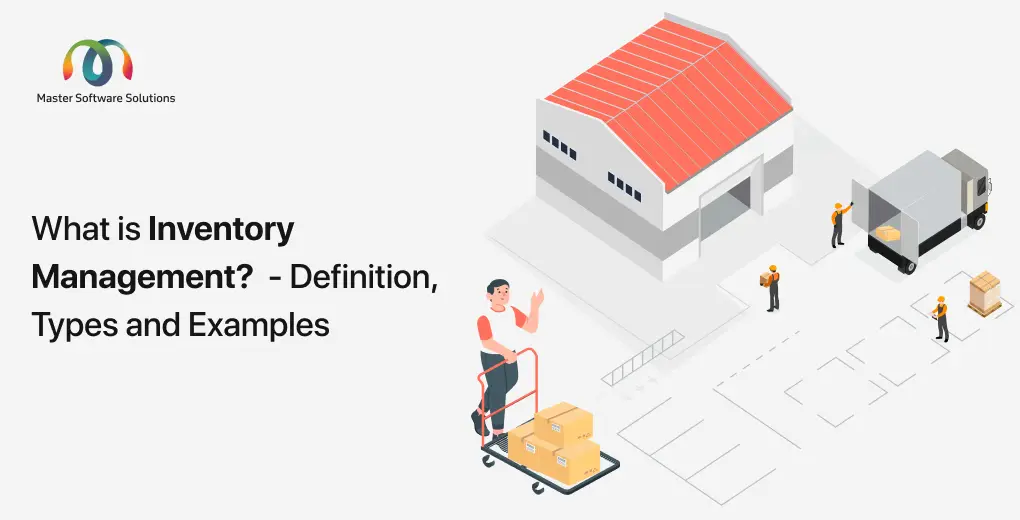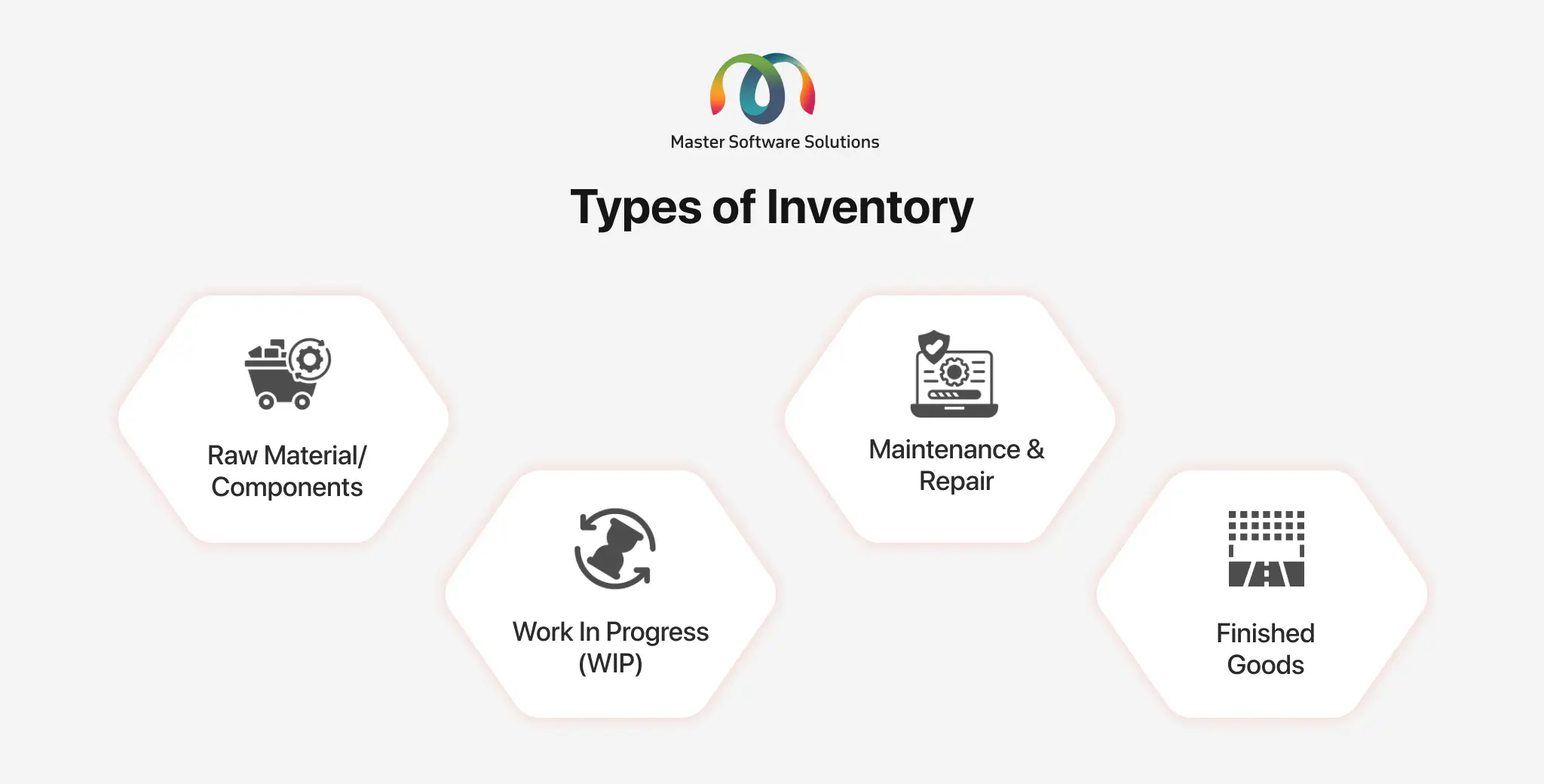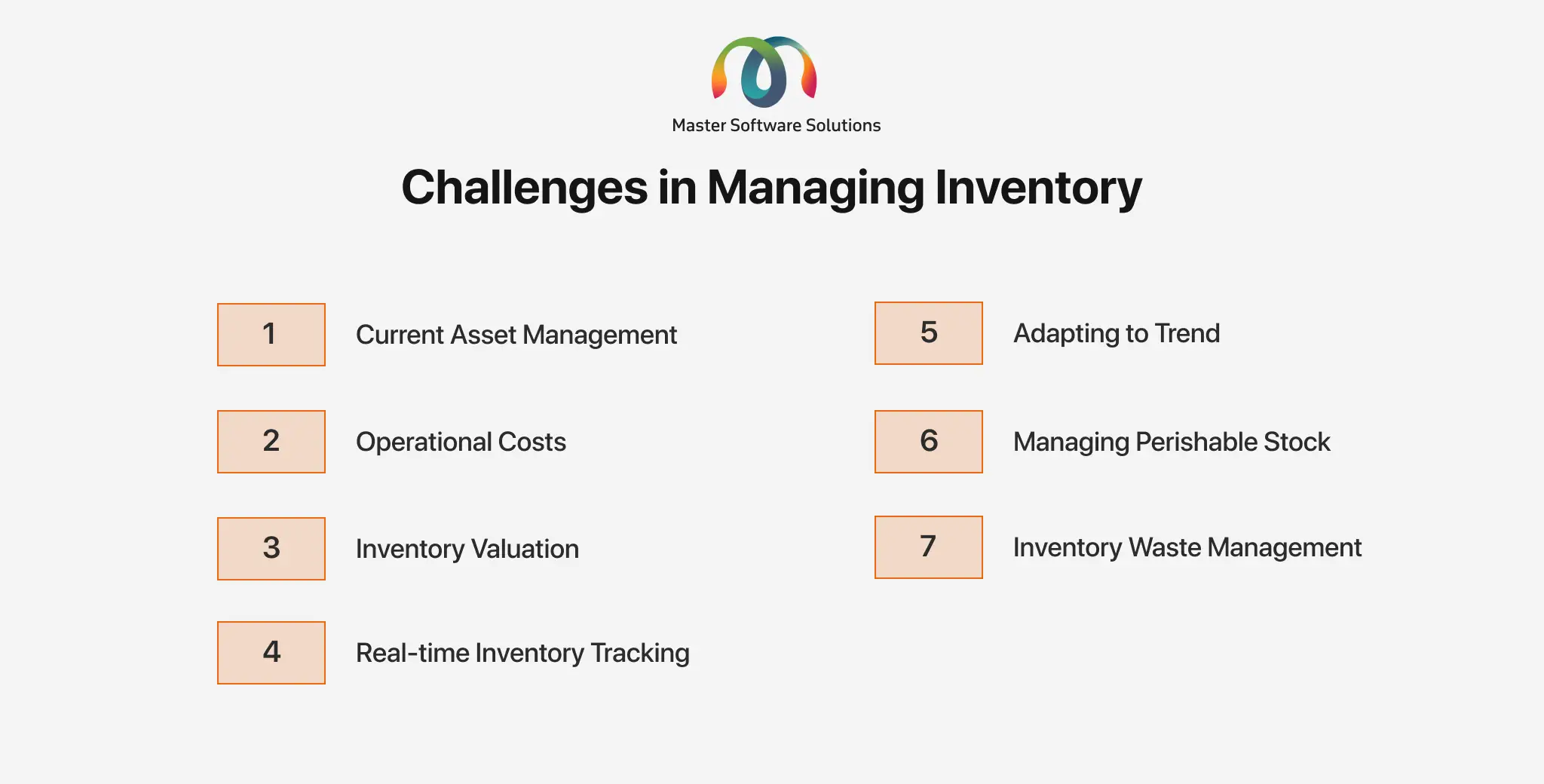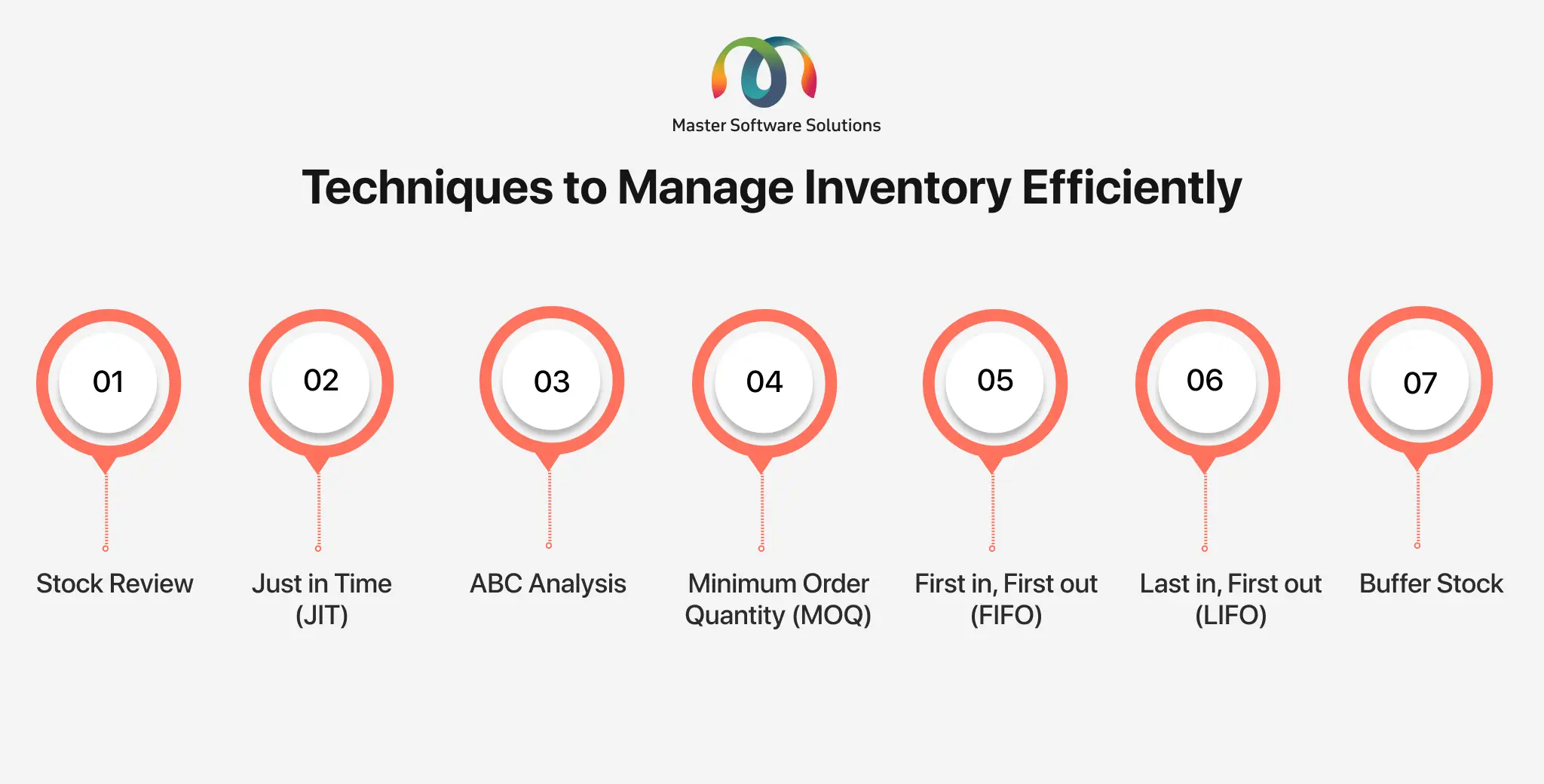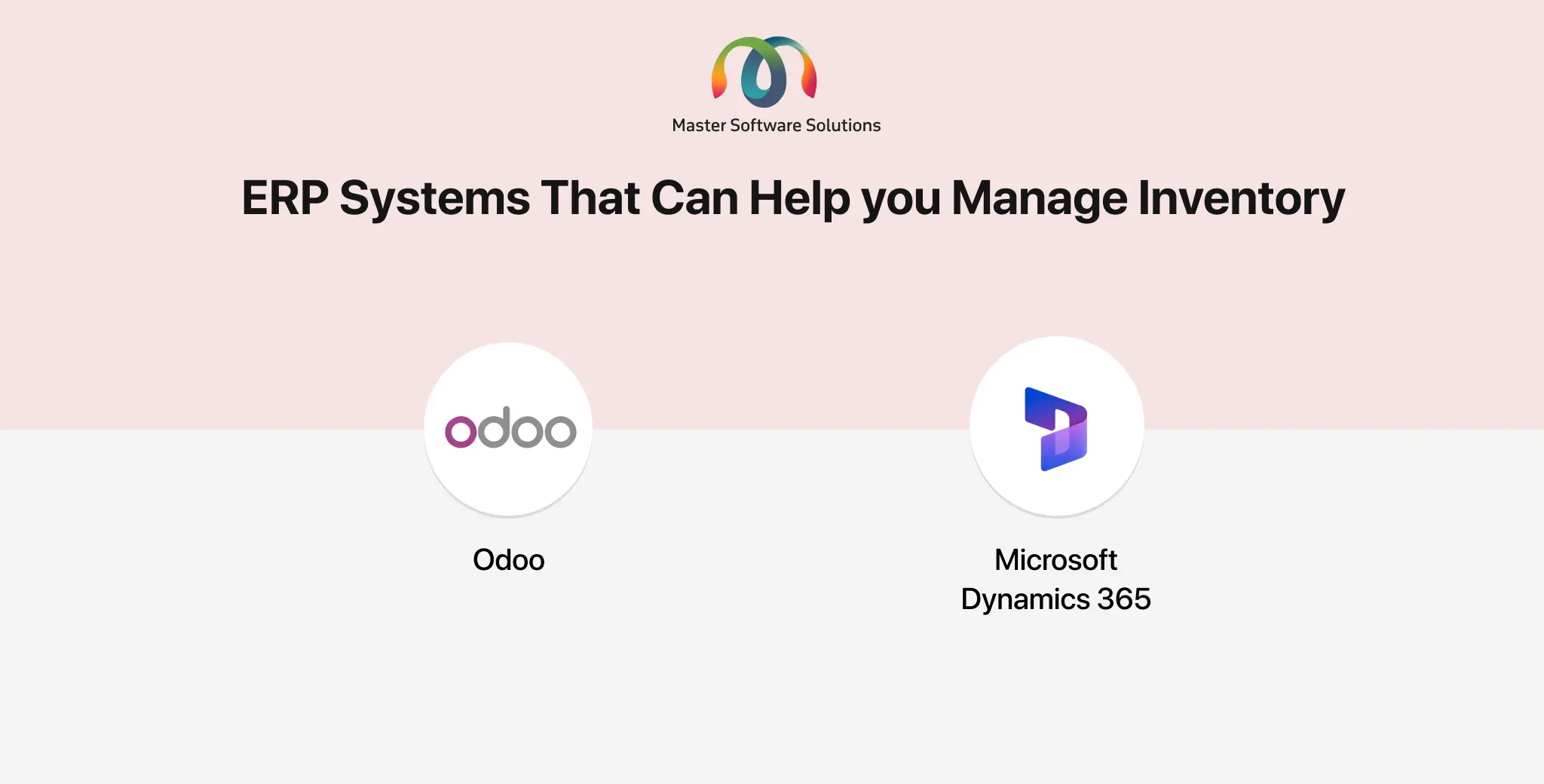Inventory management is a crucial component of supply chain management that tracks and manages stocks – finished or raw material or merchandise. Efficient inventory management is essential for businesses to adjust and adapt to changing trends and customer demands.
This blog covers:
What is inventory?
Inventory refers to the stock of finished items, merchandise, or raw materials that businesses own and store for reselling in the market or use in production.
- Raw material/components – Elements used to make finished goods or items that can be further used to make the finished good. For example, raw materials can be milk to make cheese or clarified milk. However, cheese can further be used to make cheese potato chips.
- Work in progress (WIP) – Inventory under WIP includes partially finished goods or products still being prepared and packed.
- Maintenance and repair – MRO, or overhaul inventory, includes stock supplies, spare parts, and materials a company keeps on hand for equipment repair and maintenance.
- Finished goods – These are the final products or items that are sold or delivered to the customers.
Difference between stock and inventory
Inventory and stock are similar terms and sometimes are used interchangeably; however, they are different. Inventory refers to all the goods, from raw materials to finished goods, that a company stores to sell or make finished products. On the contrary, the term stock is used for the goods ready to be sold to customers.
What is inventory management?
Inventory management is managing your stock of finished items, merchandise, or raw materials from the beginning to the end of their lifecycle. This includes purchasing, storing, tracking, selling, and restocking the product to ensure you have the right inventory levels to fulfill customer demands.
Importance of inventory management
Inventory management is crucial for industries, such as retail, manufacturing, e-commerce, warehousing, and distribution, to meet customer demands without overstocking or understocking. Efficient inventory management is important for:
- Ensuring that you have sufficient stock on hand to meet the customer demand.
- Controlling costs, improving cash flows, customer satisfaction, and production efficiency; mitigating risks; financial reporting; waste reduction; supplier relationship management; strategic decision-making; and inventory visibility.
Challenges in managing inventory
The main challenge in inventory management is getting overstocked and not being able to sell it or not having enough inventory to fulfill the customer’s demands. Other challenges faced in inventory management are:
Current asset management
Inventory is considered a current asset on the balance sheet. It is important to assess your cash conversion cycle (the time between purchasing raw material (for production) or merchandise (retailer or wholesaler) and the final sale of finished products).
Operational costs
Inventory management can incur high storage costs to support internal and mandatory financial reporting. It also includes the production cost, overhead, and product preparation for sale.
Inventory Valuation
Valuate your inventory considering the cost of labor, transportation, and handling expenses. Inventory valuation will help you determine the inventory line items on the balance sheet.
Real-time Inventory Tracking
It is challenging to track the inventory in real-time, which makes it difficult to make strategic and rational decisions for the future.
Adapting to trend
Customer demands and trends are continuously evolving and it is impossible to know how much inventory is sold, making it impossible to replenish on time.
Managing perishable stock
It is difficult to manage perishable stock due to its limited timeframe and requirements of accurate labeling and tracking physical movement. It makes tracking its location impossible.
Inventory waste management
It includes managing the waste produced during production. For example, off-cuts while making furniture, overproduction, or mishandling of inventory can incur costs.
The inventory management process
Managing inventory is a highly complex process, which depends on the nature and size of the business. For example, a company with few selling products and small operations will not need many components and will have a streamlined and simple inventory supply chain management process. On the contrary, big companies or corporations that produce multiple products have various processes with intrinsic inventory supply chain management.
Here is the basic inventory management process:
Planning and ordering
Businesses understand the market demand for the product via marketing and sales forecasting. Then they place orders for the required products or raw materials.
Delivery
The ordered goods are delivered to the business’s warehouse. For manufacturing businesses, goods are the raw materials needed for production. For distributors and retailers, goods are finished items ready for sale.
Quality check and storage
The delivered items are checked for quality in the receiving area and sorted and cataloged in a warehouse management system for simplified tracking using stock-keeping units (SKUs) and universal product codes (UPCs). Each product is arranged in a systematic pattern and the zones are labeled to ensure that older inventory is used first. This prevents the products from spoiling or self-wearing.
Selling
Distributors and retailers place orders, the fulfillment process begins, the stock is checked, and products are picked up using SKUs and prepared for delivery. Streamlining picking and packing operations is crucial for timely order fulfillment.
Reporting and auditing
Precise and accurate inventory record is maintained, from receiving stock to storage, handling, and delivering. Auditing is done using bar codes scanned like RFIDs to ensure inventory reconciliation and avoid inventory data discrepancies.
Reordering
Businesses can trigger automated reordering using certain metrics, like defining the minimum and maximum value of the product in stock. You can also set periodic replenishment schedules based on demands and trends.
Techniques to manage inventory efficiently
Businesses implement various methods and practices to achieve efficient and effective inventory management to ensure they have optimum stock to fulfill customer demands. These techniques are time-consuming, especially when dealing with larger stock-keeping units and multiple warehouses.
Some of the popular inventory management techniques include:
Stock review
This is one of the most common methodologies used to manage inventory, especially for smaller businesses. It includes analyzing on-hand stock with the forecasted stock and requires data entry that can be done manually or automated (these systems can be automated using RPA).
The stock review process involves defining minimum values and regular inspections to ensure stock doesn’t hit the minimum value and that required stock is purchased beforehand. It provides great control over the inventory; however, the process is labor-intensive and prone to human errors.
Just in Time (JIT)
This method involves purchasing the raw materials or products when the customers order them. JIT revolves around analyzing consumer behavior, buying patterns, and determining seasonal demands, and geographical factors to have a precise understanding of what product is needed when, and where. The customer demands are met in near-real time and don’t need businesses to keep large stocks or components on hand.
ABC analysis
This inventory management approach includes segmenting inventory based on its values. For example, segment A represents high-value and low-quantity products, segment B represents moderate-value and moderate-quantity goods, and segment C represents low-quality and high-quantity products.
This approach requires businesses to understand their best-selling products to ensure they have enough buffer stock to meet customer demands. For example, segment A products are high-quality, expensive, and not sold easily. Therefore, the quantity required is less. ABC analysis provides better control over high-value products.
Minimum order quantity (MOQ)
It is the minimum quantity that a supplier is willing to sell. The supplier doesn’t sell below that quantity. This approach helps suppliers to get rid of inventory quickly, excluding the bargain shoppers, like retailers.
First in, First out (FIFO)
This strategy includes selling the stock that comes first in the warehouse. This approach is especially used for perishable products that spoil if not used within a specific period. It includes arranging the goods on the front shelves of the warehouse to make them approachable.
Last in, First out (LIFO)
This inventory management strategy includes selling the newest stock first. This is a great practice during inflation and price hikes, as the production cost of the latest stock is high. Selling the newest inventory with high production costs means lower profits and taxes. This method is commonly used in the U.S. to keep profits artificially low and make financial statements look more positive.
Buffer stock
Businesses keep an emergency stock known as buffer stock, which gives alerts when it’s time to reorder stock. This ensures that you have enough stock in the warehouse and prevents any kind of supply chain disruptions.
Inventory management vs. inventory control
Inventory management and inventory control strategies are crucial for business success. They are similar to each other, however, they have a different focus. Inventory management strategy to ensure optimum inventory, whereas inventory control strategy includes tracking and managing current on-hand inventory. Businesses need to use both simultaneously to get the best results.
Inventory management
Effective inventory management verifies that you have the right stock in the right quantity and place to fulfill customer demands promptly. Inventory management includes:
- End-to-end stock management
- Demand forecasting
- Stock replenishment
- Inventory turnovers
- Determine stock levels
- Inventory audits
Inventory control
It is a daily process to manage stock within a warehouse. The inventory control process includes receiving, storing, and transferring stock; tracking and fulfilling stocks; and returns. The common inventory control methods used are:
- FIFO – First-in, First-out
- LIFO – Last-in, First-out
- FEFO – First-expiring, First out
Types of inventory management systems
Businesses use various systems for efficient inventory management depending on their operations. The most commonly used inventory management systems are:
Manual inventory system
It involves physically counting and recording the stock items on paper. Small businesses or startups adopt this method. Manual inventory management is time-consuming and has high operational costs for medium and large corporations.
Periodic inventory management system
This method includes counting physical inventory at specific intervals for financial valuation reporting. Periodic inventory management records product or item details as they move in or out of the warehouse. Some businesses also integrate barcode scanning to simplify the process.
Perpetual inventory management system
This inventory management system uses software solutions that empower businesses with real-time data. A perpetual inventory management system continuously tracks inventory and updates stock counts with every purchase or sale. It uses active RFID (radio-frequency identification) tags to track the items and barcode scanning to track stock efficiently. The data in a perpetual system is centralized and used for reporting and analytics.
Inventory management system – use cases
Many businesses have implemented an inventory management system to manage their stock levels, enabling them to fulfill customer demands on time. Inventory management systems are used in various industries, including:
- Retail – Home and furniture retail, clothing and footwear, pharmaceuticals, lifestyle & fashion, electronic retail, and food and beverages.
- Warehousing – Automotive parts & accessories, chemicals & fertilizers, electronics, fabricated metals, food and beverages, furniture and fittings, industrial machinery & equipment, medical devices, packaging, plastic and rubber.
- Manufacturing – Automotive parts & accessories, chemicals & fertilizers, electronics, fabricated metals, food and beverages, furniture and fittings, industrial machinery & equipment, medical devices, packaging, plastic and rubber.
- E-commerce – Home and furniture retail, clothing and footwear, pharmaceuticals, lifestyle & fashion, electronic retail, food and beverages, hardware e-commerce, grocery, agriculture, toys, and art & craft e-commerce.
- FMCG – Bottled water delivery, cloth diapers, dairy, B2B coffee beans distribution, produce or grocery, coffee, cannabis delivery.
Inventory management using an online system
It refers to using a digitalized platform to manage, track, and control your inventory, offering real-time updates on inventory movement, quantities, and location. These systems can be accessed on mobile, web, and desktop. There are two types of software solutions that you can use to manage and track your inventory –
Standalone inventory management software
It is an independent inventory management system that manages inventory levels without integrating it with other business management software, such as CRM or warehouse management systems. These systems include Zoho Inventory, Katana, and Cin 7.
Integrated ERP systems
ERP or enterprise resource planning system, is a centralized platform that assists you in managing your entire business operations, including inventory, CRM, sales, purchase, manufacturing, warehouse, etc. The platform enables businesses to access data and track operations from a single system. There are various ERP systems, such as Odoo, Microsoft Dynamics 365, Netsuite, SAP, etc.
Benefits of inventory management with an ERP system
Most businesses start with introductory inventory management software, which doesn’t provide advanced features like demand forecasting or tracking using RDIFs. However, as the business size grows, they require ERP inventory management for a centralized approach. The benefits of ERP for inventory management:
Real-time inventory tracking
Integrated ERP systems provide real-time inventory data, auto-update data, and remove human errors. They enable seamless tracking of inventory using RFID and barcode scanning. Real-time inventory tracking helps you:
- Reduce stockouts and deadstock, and prevent returns
- Improves order fulfillment accuracy and delivery.
- Offers complete visibility
- Uses AI for accurate demand forecasting
- Enhanced inventory turnover tracking
Automates workflow
The ERP system automates the workflow, reducing repetitive tasks and improving accuracy and productivity. An automated integrated inventory system can help you reduce data silos, stockouts, and overstocking. Operational workflow automation with ERP inventory management can help in:
- Minimizing human errors
- Seamless flow of information
- Increases efficiency and productivity
- Reduced obsolescence (sends automated backorder notification for outdated products and creates replenishment reports)
- Minimizes carrying cost for inventory storage
Accurate demand forecasting
The ERP inventory management system with AI and ML algorithms uses historical data, market research, predictive sales analysis, and demand sensing to forecast demand.
Helps set up and manage SKUs
SKUs, or stock-keeping units, are product codes used to search for and identify stocks using invoices, orders, and lists. These codes help you identify and differentiate between products and track and monitor available stock, location, sell rate, margin, etc.
ERP systems that can help you manage inventory
As discussed, many ERP solutions are available, among which Odoo and Microsoft Business Central are the most popular. Here, we’ll discuss both platforms and explore how they can help you manage your inventory.
Odoo
It is an open-source ERP platform that enables small and medium-sized businesses to manage and track their business operations, such as sales and marketing, finance, manufacturing, inventory management, supply chain management, HR, and e-commerce and retail POS.
Odoo offers two editions:
- Odoo Community – This free platform makes it a great choice for businesses with limited budgets. The edition provides basic modules with limited customizations that are sufficient for startups and small businesses.
- Odoo Enterprise – A paid and licensed version of Odoo that can help you connect all your business operations, ensuring seamless data flow and operations. It offers a comprehensive suite of business applications with high-level customizations suitable for medium-sized enterprises.
Features of Odoo for inventory management
Odoo ERP offers advanced features and functionalities to help you manage, track, and optimize inventory. It provides real-time inventory insights, automates key tasks, and optimizes the supply chain. Features of Odoo inventory management are:
- Bar-code integrations
- Demand forecasting
- Pick, pack, and ship
- Advanced inventory control (min-max rules or MTO)
- Real-time visibility
- Automated replenishment process
- Inventory valuation
- Mobile inventory tracking
- Flexible integrations and customizations
Microsoft Dynamics 365
It is a cloud-based integrated business management software that helps big enterprises manage all their business operations. The ERP Microsoft Dynamics 365 is an end-to-end solution with very advanced functionalities and can be customized to cater to the specific demands of larger organizations with complex operations.
Microsoft Dynamics 365 offers two editions:
- Business edition– This edition is designed for smaller businesses with limited needs and offers basic features and functionalities. It provides simple versions of core modules, including sales, marketing, and customer service.
- Enterprise edition – This Microsoft version is designed for larger enterprise businesses to manage their businesses with advanced modules and functionalities, including project management, learning management software, manufacturing, warehouse and inventory management, supply chain management, and field service.
Features of Microsoft Dynamics 365 for inventory management:
Microsoft Dynamics provides inventory management under its supply chain management module. The features of MS Dynamics 365 inventory management are:
- Real-time visibility
- Multi-location tracking
- Automated reordering
- Serial lot number tracking
- Barcode scanning integration
- Cost tracking
- Inventory tracking
- Advanced Reporting
- Integration with sales and purchasing
- Mobile inventory management
- Physical inventory counting capabilities.
Bottom-line
If you are a decision-maker, you understand the value of effective inventory management in conjunction with other operations to increase efficiency, productivity, and profitability. Master Software Solutions is an ERP expert who can help you with ERP implementation, ERP customization, ERP migration, ERP integration, and ERP development. Schedule a call to discuss your business and see how we can transform your business ERP implementation.
